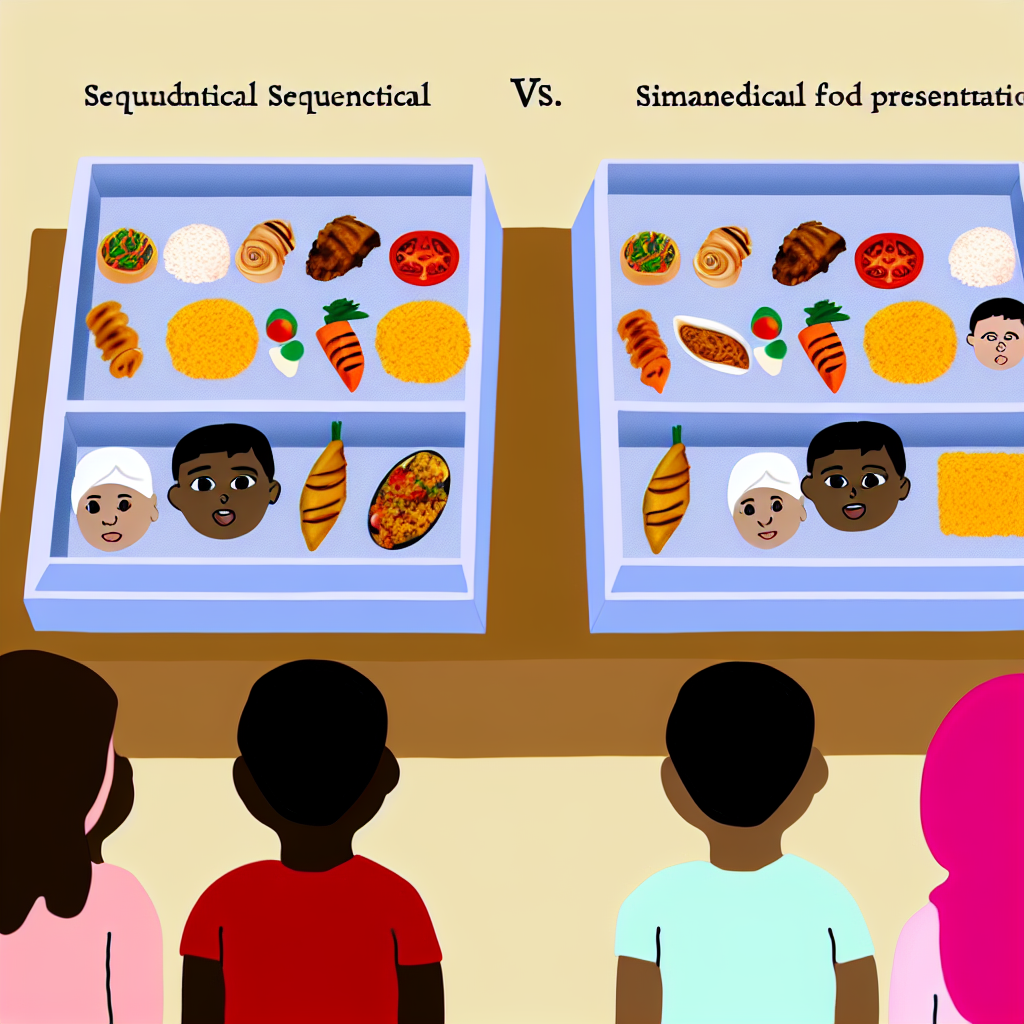Comparing Simultaneous and Sequential Food Presentation to Increase Consumption of Novel Foods
Children with Autism Spectrum Disorder (ASD) often have food selectivity—a pattern of eating where they consume only a small variety of foods while rejecting many others. This can lead to nutritional deficits, difficulties in social situations, and challenges for caregivers and educators. A recent study by Davis, Slaton, MacDonald, and Parry-Cruwys (2023) explores two strategies to encourage children with ASD to try new foods: simultaneous food presentation and sequential food presentation.
Their research, published in Behavior Analysis in Practice, offers valuable insights for behavior analysts working with children who have selective eating behaviors. This blog post will summarize their findings and discuss key takeaways for professionals in the field.
What Is Food Selectivity?
Food selectivity is more than just being a "picky eater." It often includes:
- Limited variety of foods eaten (less than 20 different foods).
- Avoidance of entire food groups (e.g., refusing all vegetables or proteins).
- Strong preferences for specific textures, colors, or brands.
Food selectivity is especially common in children with ASD, affecting 46%-86% of them, compared to 27% of neurotypical children. Some factors that contribute to this behavior include:
- Sensory sensitivities – Aversion to certain food textures, temperatures, or smells.
- Behavioral rigidity – Preference for sameness and difficulty accepting changes in routine.
- Medical conditions – Issues like gastroesophageal reflux disease (GERD) or oral-motor difficulties.
- Environmental factors – Caregivers unintentionally reinforcing selective eating by offering preferred alternatives.
Behavior analysts often use applied behavior analysis (ABA) techniques to address food selectivity, but finding practical, evidence-based methods that can be effectively implemented in real-world settings (such as schools) remains a challenge.
Simultaneous vs. Sequential Food Presentation
Davis et al. (2023) compared two common strategies for presenting nonpreferred foods (foods the child does not usually eat) alongside preferred foods (foods the child already enjoys):
- Simultaneous Presentation – The nonpreferred and preferred foods are placed on the plate at the same time.
- Sequential Presentation – The child must eat the nonpreferred food before getting access to the preferred food.
Previous research on these methods has shown mixed results, with some studies favoring simultaneous presentation and others supporting sequential presentation. However, many prior studies relied on escape extinction (not allowing a child to leave the table or refuse food), which may not always be practical or necessary. This study aimed to determine which method was more effective without using escape extinction.
Study Methods
Participants
The study included four children with ASD who attended a private day school for children with developmental disabilities. Each child met the following criteria:
- Ate fewer than 10 different nutritious foods.
- Had no medical conditions preventing food consumption.
- Had an Individualized Education Plan (IEP) goal related to expanding their diet.
Procedure
The research took place in the students’ classrooms during snack time. Each child was presented with specific foods:
- Baseline Phase – Nonpreferred foods were presented alone, and researchers measured how much was eaten without any intervention.
- Treatment Comparison Phase – The researchers alternated between simultaneous and sequential presentation to see which method increased food consumption.
- Best Treatment Phase – Any foods that were not successfully consumed in the less effective condition were moved to the more successful condition for that participant.
Target foods varied by child but included vegetables, fruits, proteins, and starches. Preference assessments helped identify highly preferred foods that could serve as reinforcers.
Key Findings
This study provided strong support for sequential presentation as a more effective method for increasing food consumption. The results:
- Sequential presentation led to higher food consumption in 2 out of 3 participants.
- Simultaneous presentation was ineffective in increasing novel food intake.
- One participant did not respond to either method, indicating that additional interventions (e.g., reinforcement strategies) may be necessary for some children.
Notably, parents expressed highly favorable opinions on the interventions, emphasizing the importance of expanding their children's diets.
What This Means for Behavior Analysts
For behavior analysts working in schools, clinics, or home settings, these findings suggest that sequential food presentation should be considered when designing interventions for food selectivity. Here are some practical implications:
- Use sequential presentation when possible – Present the nonpreferred food first, followed by the preferred food as reinforcement.
- Avoid relying solely on simultaneous presentation – Simply placing new and preferred foods together may not encourage consumption.
- Individualize interventions – While sequential presentation was effective for most participants, some children may need additional supports like differential reinforcement or shaping techniques.
- Monitor progress and adjust approaches – If a child continues to reject foods, consider pairing sequential presentation with other evidence-based methods like gradual exposure.
These findings align with other ABA-based approaches that use reinforcement contingencies to shape new behaviors.
Final Thoughts
Food selectivity is a persistent challenge for many children with ASD, often requiring structured, evidence-based interventions. The study by Davis et al. (2023) provides important insights for behavior analysts and educators by demonstrating that sequential food presentation is more effective than simultaneous presentation in encouraging children to try new foods.
For professionals supporting children with feeding challenges, this research suggests that a sequential approach—where children eat the nonpreferred food before accessing preferred foods—may be a simple and practical strategy to implement in educational and therapeutic settings.
For more details, you can read the full study here: DOI: 10.1007/s40617-023-00789-x.



